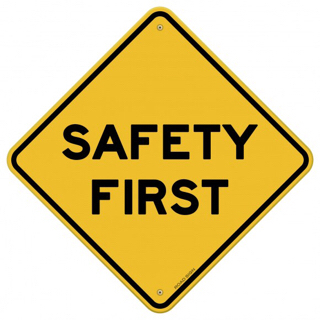Information
-
Document No.
-
Site Name
-
Conducted on
-
Conducted By:
-
Client / Site
-
Site Contact:
Risk Assessment Check
-
Please list below all relevant risks identified from the site visit - All areas to be assessed individually.
-
Working at Heights - NAL-022
-
Confined Spaces - NAL-003
-
Ladders - NAL- 019
-
Mobile Platforms/Towers - NAL-005
-
Fixed Scaffolding
-
Hazardous Materials - COSHH Assessment
-
Slips, Trips and Falls - NAL-017
-
Pathways/ Road Access and Egress
-
Is there site security issues?
-
Any Environmental Issues?
-
Signs of Vandilism/ Social Problems
-
Storage Limitation Issues?
-
Personal Safety?
-
Vehicle Traffic issues?
-
Emissions and Processes?
-
Explosive Materials?
-
Excessive Noise Issues - NAL-012
-
Hot Works(Inside Enclosures) - NAL-031
-
Use of Power Tools?
-
Exposure to Vibration - NAL-006
-
Lone Working - NAL-010
-
Safety Harnesses & Lanyards - NAL-015
-
Use of Electric Drills - NAL-018
-
Working on fragile roofs - NAL-021
-
Cable cutting & Removal - NAL-024
-
Removal of Asbestos Cement - NAL-027
-
Removal of AIB (Not ceiling tiles) - NAL-029
-
Parking Restrictions (take Photo)
-
Power on Site?
-
Psittacosis - NAL-013
-
Rats or Vermin ( Leptospirosis) -NAL-008
-
Access issues on site?
-
Electric Hazards (240v) - NAL-002
-
Contractor issues?
-
Fire Hazards - NAL-026
-
Gas Safety?
-
Overhead power cables?
-
Plant and Machinery?
-
Manual Handling - NAL-011
-
Lighting Internal
-
Lighting External
-
Hazardous Buildings
-
Water Hazards?
-
Pressurised Gas - NAL-007
-
Storage Tanks?
-
Radiation?
-
Anthrax - NAL-001
-
Floor Voids Access/Egress - NAL-004
-
Loading Vehicles - NAL-009
-
Reversing of Vehicles - NAL-014
-
Sharps - NAL-016
-
Mobile Elevation ( Cherry pickers) NAL-020
-
Working on pitched roofs NAL-025
-
Ducting Contaminated with liquid - NAL-025
-
Removal of Asbestos Insulation - NAL-028
-
Removal of sprayed insulation - NAL-030
-
Environmental Concerns?
-
Water on Site?
-
Any Comments Relating to Risk Assessment:
Work Area Assessment
-
Location of DCU
-
Can the DCU be attached to the Enclosure?
-
Explain why the DCU cannot be attached.
-
Location of Water Supply
-
Location of Power Sockets.
-
Will any Service appliances need to be isolated/disconnected
-
Has isolation of service appliances been arranged ( Enter contact details in notes)
-
Location of van.
-
Number of vision panels required and where positioned?
-
Is CCTV required and where is it going to positioned?
-
Size of Enclosure?
-
Number of Air changes required?
-
Have void spaces been taken into account?
-
Have Loft Spaces been entered?
-
Is work required in Loft Spaces ( Do opening to lofts need to be capped off?)
-
Airlock. / Baglock dimensions?
-
Position of Airlocks / Baglocks?
-
Can we construct and insert the minimum size Airlocks on site?
-
- Restricted Space
- Time Constraints
- Area cannot be extended
- Position of other equipment
- Welfare Restrictions
-
NPU ventilation?
-
Roving Head required - Length required?
-
Location of Transit Routes?
-
Any obstructions to Transit Routes?
-
Can Transit Routes be isolated from others?
-
Any third party risks associated with this project?
-
Type of Asbestos:
- Chrysotile
- Amosite
- Crocidolite
-
Quantity of Asbestos?
-
Condition of Asbestos?
- Good condition
- Slight damage
- Medium Damage
- High Damage
-
Welfare Facilities Required?
-
Who is providing the Welfare Facilities?
-
Location of Welfare Unit?
-
Duration of Works?
-
What Access Equipment is required?
-
Any other materials required for this project, I.e. Wood, timber frame work, spray glue.... Etc
Site Environmental Management Systems.
-
E 10.1 Is the company ( or site) environmental policy available and dispatched on site, with relevant requirements highlighted at the site induction?
-
E 10.2 Has the contract and client documentation been reviewed to identify the specific environmental requirements, including planning conditions?
-
E 10.3 Has a construction environmental management plan been prepared identifying the relevant targets, objectives, issues and controls
-
E 10.4 Is there a system for ensuring that a suitable and sufficient arrangements are in place for the management, storage and disposal of waste through the production of a site waste management plan?
-
E 10.5 Is there a system for ensuring that all site personnel (including sub-contractors) are made aware of the project environmental issues and standards through site inductions, briefings and toolbox talks.
-
E 10.6 Have responsibilities for environmental management been defined and communicated through inductions, notice boards and other media?
-
E 10.7 Is someone responsible for ensuring the environmentally sensitive areas are identified and protected ( such as drainage, rivers, streams, groundwater and areas containing protected plants and animals)?
-
E 10.8 Is there a system for ensuring the necessary environmental licenses have been identified and granted ( such as discharges of water and effluent, tree preservation orders, premises producing hazardous waste and waste management licenses)?
-
E 10.9 Is there a system for ensuring that method statements include sufficient control measures for environmental management?
-
E 10.10 Is there a system for sites to deal with environmental emergencies (such as for the spill ages and groundwater contamination) and for notifying them to.
-
E 10.11 Is there a suitable and sufficient monitoring regime in place to ensure that the site environmental requirements are being met (such as relevant environmental inspections for oil and waste, protected areas, water quality, noise and dust)?
-
E 10.12 Are Environmental records being maintained (such as waste transfer notes, consignment notes and noise monitoring)?
-
E 10.13 Have adequate arrangements been established for liaison and communication with local stakeholders (residents, shops, businesses, schools, parish council)?
-
Action Point
Waste Management, Storage and Disposal.
-
E 3.1 Has the site waste management plan been prepared, identifying waste types and quantities for the project, is it being maintained/updated.
-
E 3.2 Has a waste target and any relevant objectives been set for the project?
-
E 3.3 Have the project waste requirements been included in the contracts with the trade contractors and suppliers
-
E 3.4 Are the project waste requirements included in the site induction?
-
E 3.5 Have waste responsibilities been defined to know who is disposing of what and when?
-
E 3.6 Have designated area(s) been established on a site to segregate and reuse materials?
-
E 3.7 Have recycling facilities been established to segregate office/canteen waste (such as paper,cans and plastics)?
-
E 3.8 Has the site been registered for hazardous waste with the environment agency?
-
E 3.9 Are waste management permits, licenses or exemptions in place for any processing of waste on site (such as crushing and soil treatment)?
-
E 3.10 Is the WRAO quality protocol being complied with for the production of aggregates from waste?
-
E 3.11 Is the CLAIRE code of practice being complied with for the treatment and use of contaminated soils (such as appointment of a qualified person, materials management plan, and so on)?
-
E 3.12 Are hazardous wastes (oil, fuel, paints and so on) collected and stored separately fro general waste.
-
E 3.13 Is the burning of rubbish on the site prohibited, unless a permit/license has been obtained?
-
E 3.14 Are registered waste carriers used to remove waste from the site and are these checked on a regular basis?
-
E 3.15 Does the tip where the waste is taken have a license for the type of waste?
-
E 3.16 Do waste transfer documents include the right information (six-digit waste codes, carrier license number, tip location and declaration regarding the waste hierarchy )?
-
E 3.17 Are waste transfer documents being retained: 2 years for non hazardous and 3 years for hazardous waste?
-
Action Point.
-
Energy and Transport.
-
E 4.1 Have energy objectives and targets been set for the project?
-
E 4.2 Has an energy monitoring process been implemented to monitor and report energy consumption and carbon emissions, including business travel and transport?
-
E 4.3 Have discussions with energy supplier(s) been made to ensure electrical supplies are connected at the earliest opportunity to avoid power from generators?
-
E 4.4 Have site offices been fitted with practical energy saving devices, including low energy lighting (LED) passive infrared sensors for lighting, timer switches and thermostats for heating/ hot water and so on?
-
E 4.5 Does the site induction cover key energy efficiency issues (such as maintaining plant and switching off items when not in use)?
-
E 4.6 Are there signs in place advising site personnel to switch equipment off when required?
-
E 4.7 Is site office equipment set up to print efficiently (such as double sided) and to a central location rather than individual printers.?
-
E 4.8 Has the site considered renewable energy to contribute to powering the site accommodation?
-
E 4.9 Is there a logistics/transport plan that considers efficient transport arrangements (such as the use of consolidation centres or just in time deliveries)?
-
E 4.10 Have local, sensitive areas been identified (such as schools and residents)?
-
E 4.11 Has the site considered green travel arrangements for reducing staff travel to the site?
-
E 4.12 Has the location of suitable parking arrangements for private cars and plant been defined?
-
E 4.13 Has permissions been obtained from the local authority for any road closures or erections of hoarding on the public highway?
-
E 4.14 Have local pedestrian diversion routes been agreed with the local authority?
-
E 4.15 Have delivery routes for construction traffic been arranged with the local authority?
-
E 4.16 Have suppliers been made aware of any delivery restrictions and routes?
-
E 4.17 Are entrance and exit gates on main roads rather than side roads?
-
E 4.18 Are deliveries scheduled to avoid traffic disruption or queuing outside of the site?
-
E 4.19 Are delivery vehicles switched off when being loaded/unloaded (unless needed to operate Hiab or similar)?
-
E 4.20 Have designated vehicle routes on site been defined?
-
E 4.21 Are deliveries organised to avoid excessive use of reversing sirens?
-
Action Points
-
Drawing of Work Area
-
Is there any site Photographs showing Risk activities?
-
Location of Photographs?
-
Have site specific Risk Assessments been completed?
-
Name of Individual completing Assessment:
-
Signature:
-
Date of Assessment:














